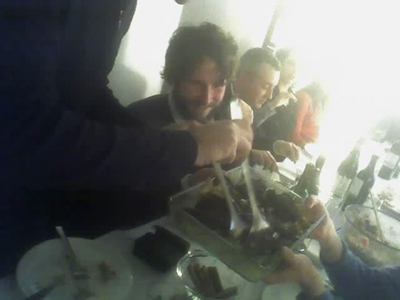Katherine Huang
Neon Parc
1/53 Bourke Street Melbourne, February

Plastic
It's 2008 and nice to have a show that feels like the future. Katherine Huang's current exhibition at Neon Parc seems to hail from there, but a good one where plastic hasn't taken us down, but has become a new passable and appealing media. That's a nice thing artists can do, take something that’s tagged ‘bad’ and give it a good new go.
Studio
Huang's studio drawings feel familiar and set the exhibition like it's still being made or is about something that feels like making. I have had about enough of ‘The Studio’— as mysterious location where real things happen — on invites or in Art Collector interviews. I think Huang does it better and a bit further.
Placement
With titles like, ‘This Piece Is About Air. There's Nothing There’ (2008), Huang’s op shop buys, containers and placements cap the inbetweens and spaces. Huang seems to really want us to notice where she put it and where the object is found — that she definitely chose it and not the other way around. It seems like the tweaking could go on forever, including her audience in putting and preparing to arrive, rather than the studio invite opposite of that.
Kate Smith
1/53 Bourke Street Melbourne, February

Plastic
It's 2008 and nice to have a show that feels like the future. Katherine Huang's current exhibition at Neon Parc seems to hail from there, but a good one where plastic hasn't taken us down, but has become a new passable and appealing media. That's a nice thing artists can do, take something that’s tagged ‘bad’ and give it a good new go.
Studio
Huang's studio drawings feel familiar and set the exhibition like it's still being made or is about something that feels like making. I have had about enough of ‘The Studio’— as mysterious location where real things happen — on invites or in Art Collector interviews. I think Huang does it better and a bit further.
Placement
With titles like, ‘This Piece Is About Air. There's Nothing There’ (2008), Huang’s op shop buys, containers and placements cap the inbetweens and spaces. Huang seems to really want us to notice where she put it and where the object is found — that she definitely chose it and not the other way around. It seems like the tweaking could go on forever, including her audience in putting and preparing to arrive, rather than the studio invite opposite of that.
Kate Smith


